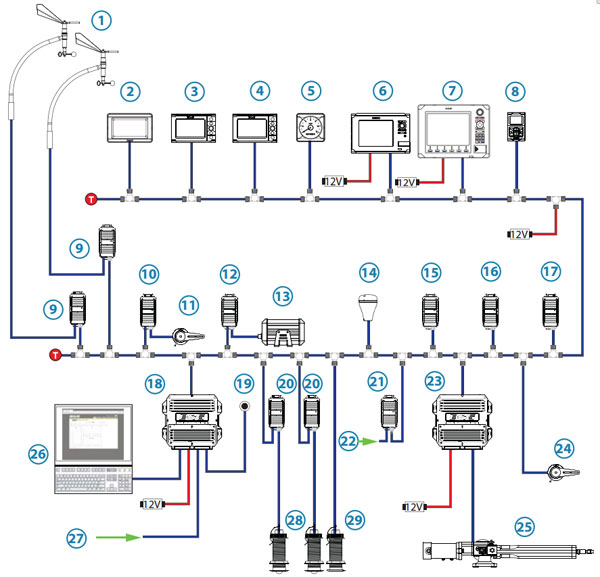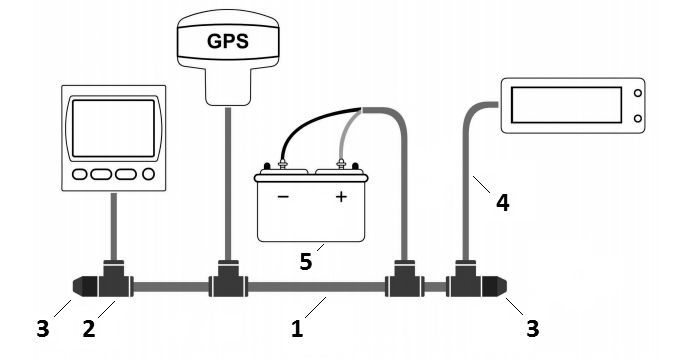
These indicators use 12 volts so I’ve run the positive from each of these lights to a channel on the run indicator. But, I do have indicator lights at both helms to show if a bilge pump is on. Because my run indicator is located at the lower helm and the bilge pumps are much lower in the boat it’s not practical to run these circuits through the module.

Monitoring current with the YDRI requires the circuit run through the run indicator, meaning the positive supply comes into the first terminal and the connection to the load goes out the second. On Have Another Day I’m using a run indicator to monitor the status of my three primary bilge pumps and the docking lights.

But, you can use the device’s rules to change this behavior. 2 amps of current consumption on a channel and off at less. By default these channels are turned on where there’s more than. The LEDs on top of the run indicator indicate the status of switching channels 1-4 within the unit.
#Setting up an alarm on nmea 2000 network plus
You can see power in and load out for each of the four channels plus the LEDs on the unit for each of the four circuits The YDRI with circuit connections visible. In addition to the first 8 channels with their pre-configured roles you can use the remaining 20 channels as status indicators with the YDRI’s rules capabilities which we will explore more below. In this case that load is the halogen docking lights on the stern of Have Another Day.

This is because there’s a load through channel D that’s consuming current (turning channel #4 on) with voltage present (turning channel #8 on). So, in the example above you can see that channels four and eight are on. Switching channels five through eight are used to indicate voltage present on circuits A through D. By default, the unit comes set to digital switch bank 1 and uses channels one through four to indicate there’s current flowing through the run indicators four monitored circuits, identified as A, B, C, and D. Events are communicated by toggling switching channels. To share its information with other devices on the network, the YDRI acts as a virtual NMEA 2000 digital switch. But the RIM-100 monitors six channels for voltage only, while the YDRI monitors four channels for both voltage and current.Ī visualization of the digital switching channel status of the YDRI Similar to the Maretron Run Indicator Module (RIM-100), the YDRI uses digital switching PGNs (127502) to share information with devices on your NMEA 2000 network. For devices like bilge or freshwater pumps you can be notified if they run for too long, are activated too frequently, or are drawing too much current. Measuring voltage and current allows you to know if a circuit is on and operating normally. Run Indicator The YDRI with voltage only monitoring in place for three bilge pumps and voltage and current monitoring for the docking lightsįirst up is the YDRI-01 Run Indicator this device measures the voltage, and optionally current, of four circuits. I became the distributor of their products after using them for some time and being impressed by the capabilities of their products and their clever solutions to challenges many boaters face. so I have both a greater level of familiarity with and a vested interest in their products. distributor of Yacht Devices’ products, Yacht Devices U.S. These new products build on their impressive array of capabilities and make monitoring your boat easier and more powerful.Īs a reminder, I also own the U.S. Recently they’ve introduced a NMEA 2000 run indicator to monitor circuits aboard your boat and an alarm module that can notify you of problems or provide a man overboard button. Yacht Devices Limited builds an impressive array of clever devices to solve specific needs aboard your vessel.

The alarm button is the small cylinder at the top of the image, the speaker and button on the left are connected to it, the run indicator is at center bottom, and the circuit control is just above it


 0 kommentar(er)
0 kommentar(er)
